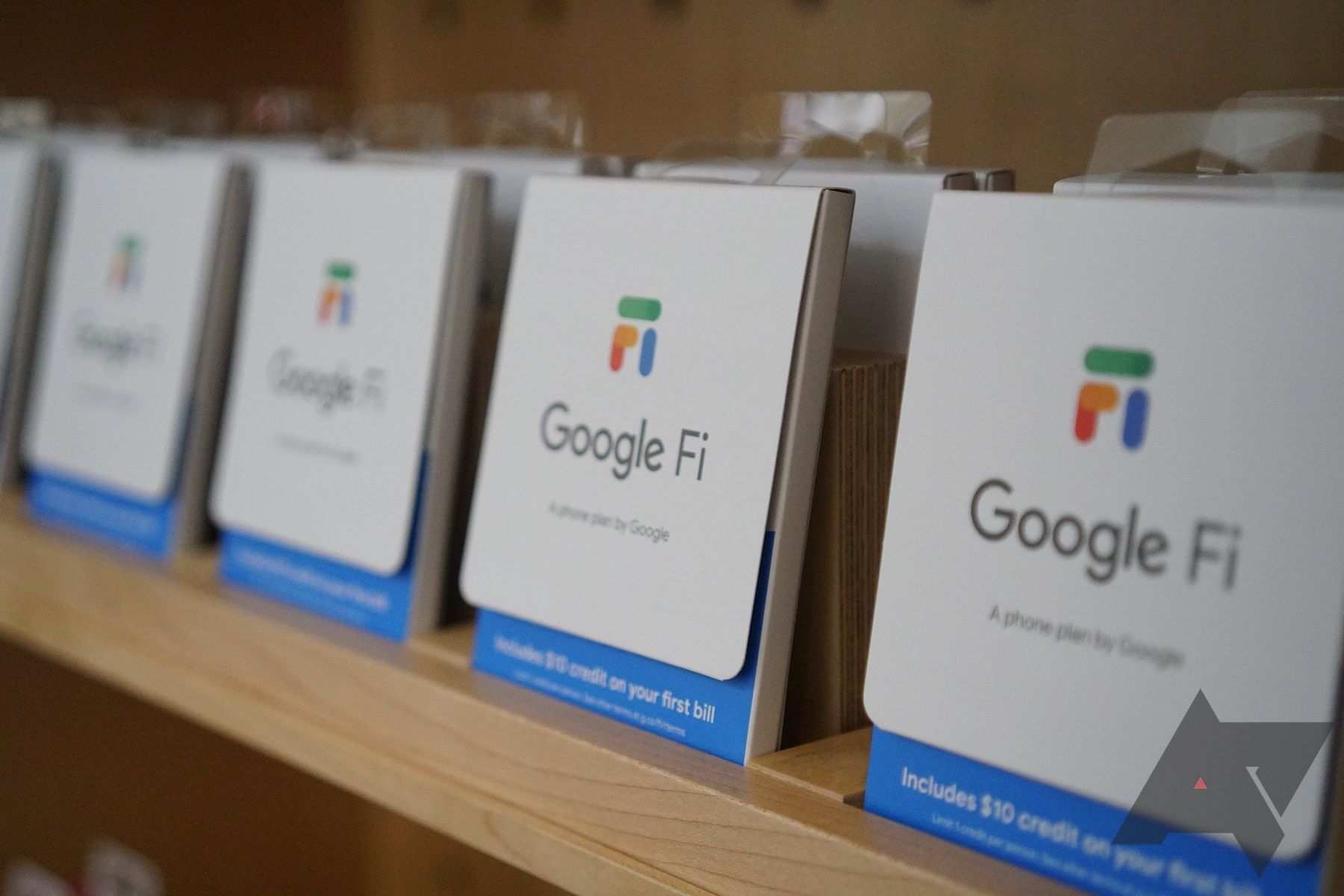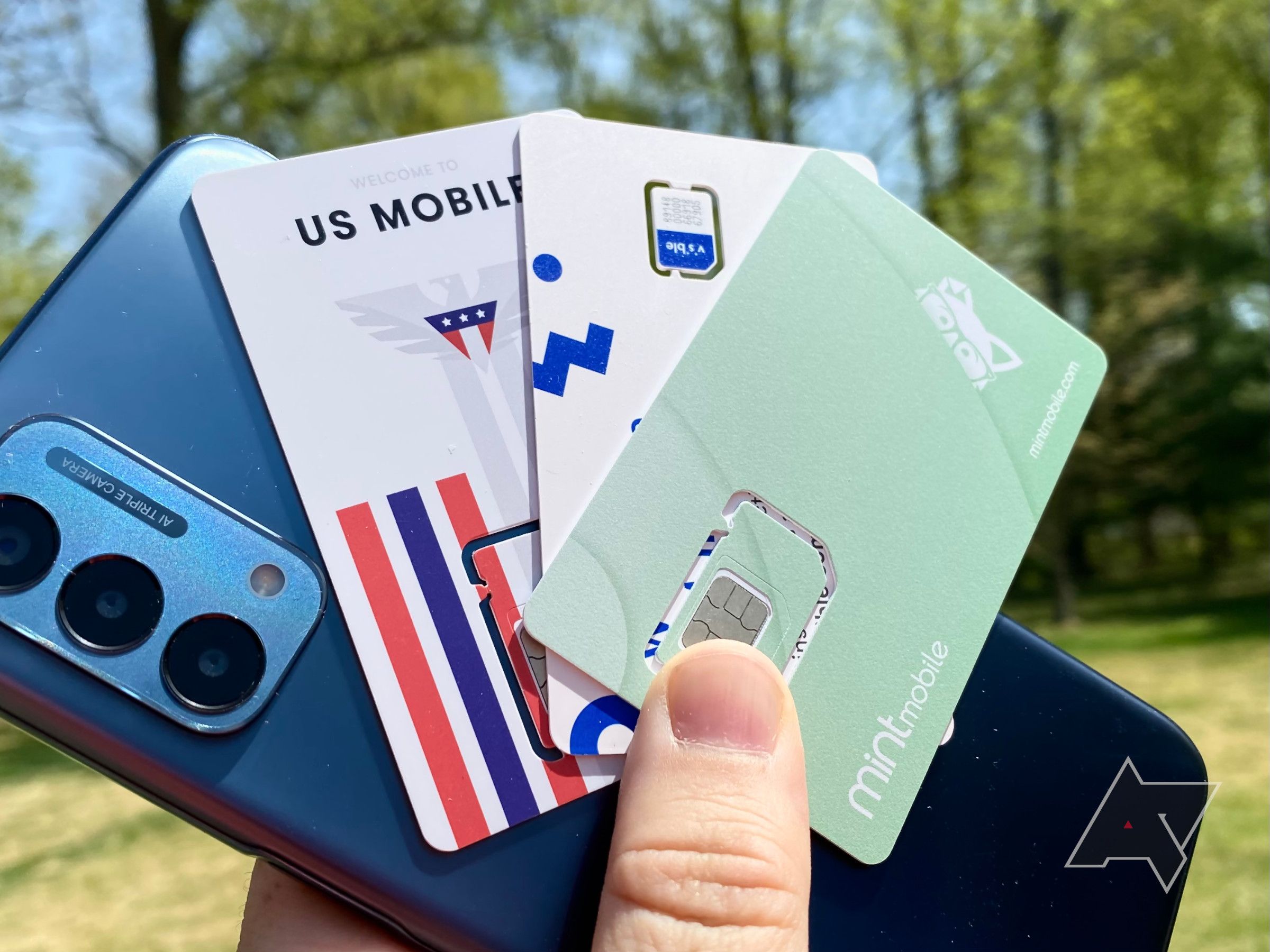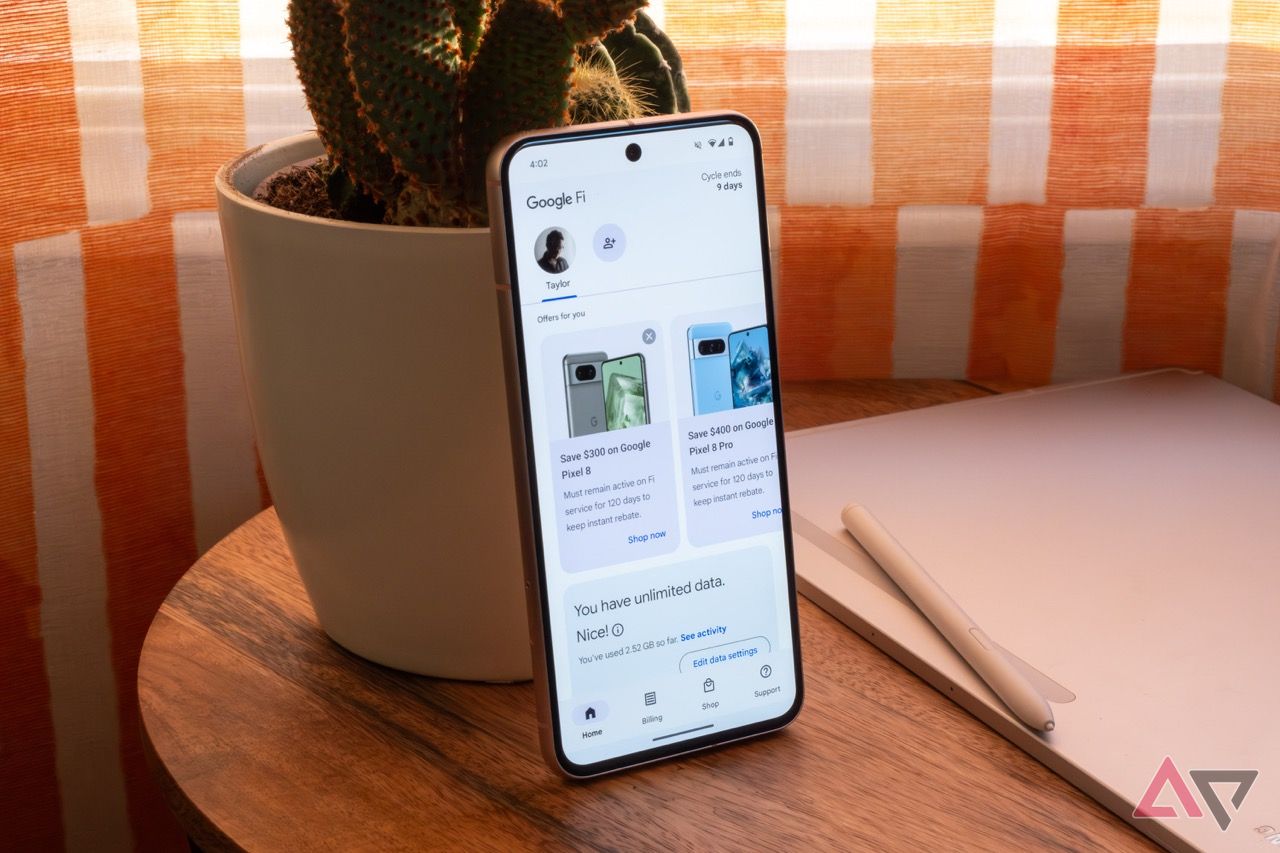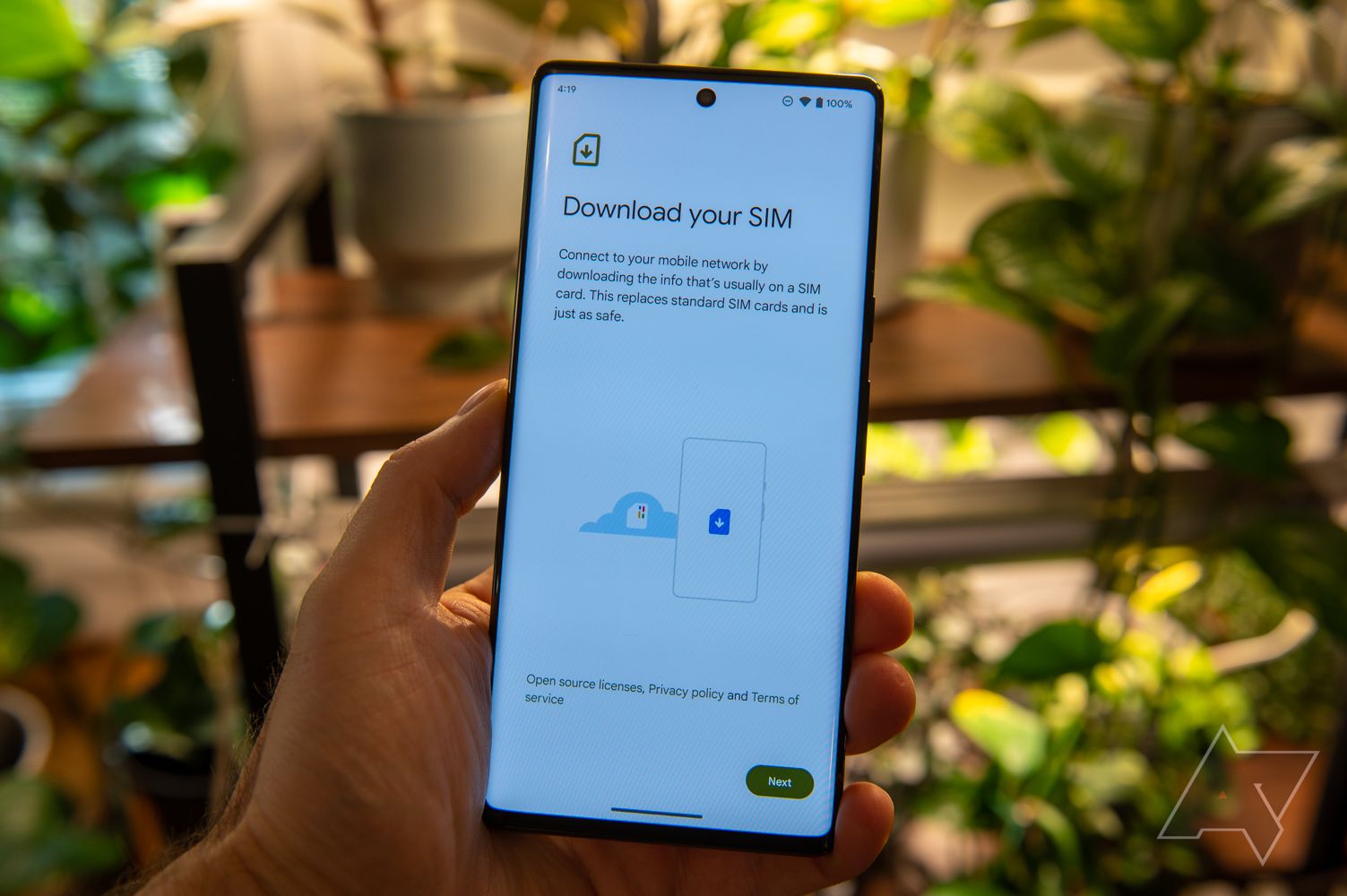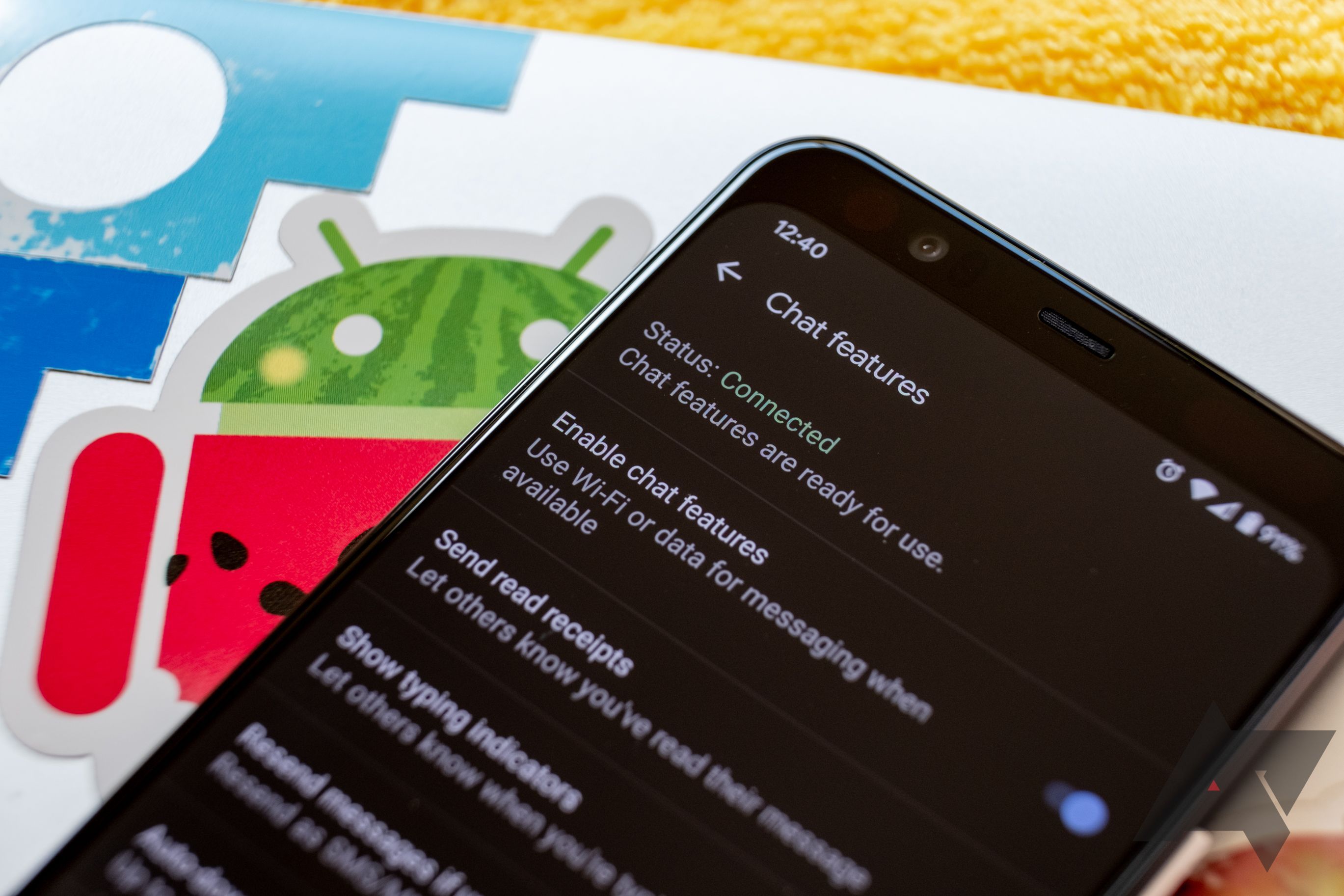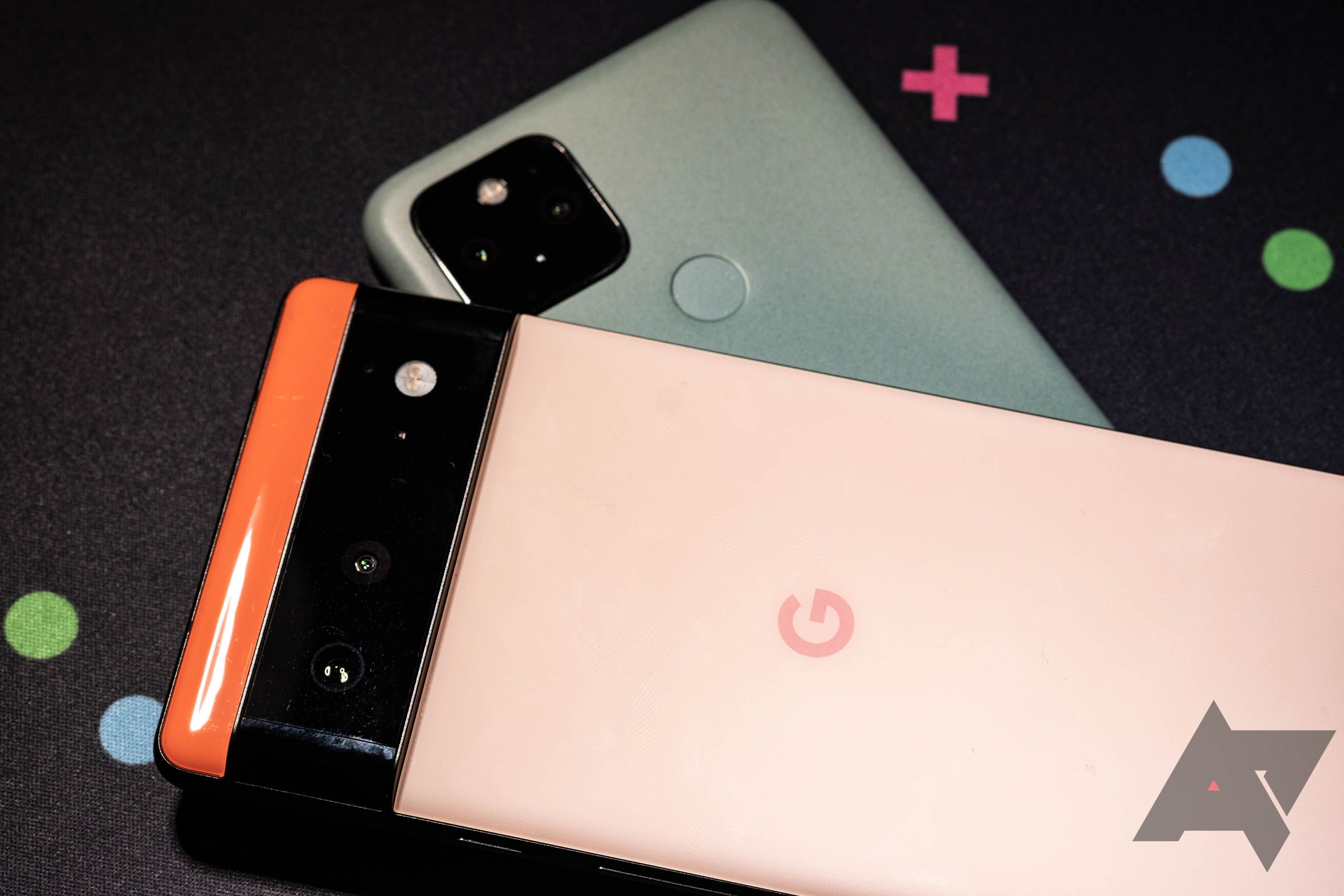Quick Links
Reliable mobile networks are a necessity, just as much as a reliable water supply. While the big three carriers (Verizon, AT&T, and T-Mobile) cover many users, sometimes the prices aren't great, which is where MVNOs come in. Companies like Mint Mobile and Ting piggyback off the big three to offer their own connections at much more affordable prices, and Google's Fi is one such carrier.
MVNOs lease carrier services from one or more of the major carriers. Google FI relies on T-Mobile's 5G network. Of course, Fi offers all kinds of perks including end-to-end encryption and spam filtering to entice potential customers.
Google FI: a brief introduction
Google Fi is Google's take on a mobile carrier, launched under the name Project Fi in 2016. At the time, phones connecting to data through Fi automatically switched between three networks — T-Mobile, Sprint, and US Cellular — depending on which offered the highest-quality connection in a given area.
T-Mobile acquired Sprint in 2020, leaving Fi to bounce between data supplied by T-Mobile and US Cellular. In early 2023, Google dropped US Cellular as an "official" network, meaning Google Fi subscribers use T-Mobile's network almost exclusively. Google notes that Fi-certified phones still connect to US Cellular when T-Mobile isn't an option. It will be T-Mobile anywhere both are available, even if US Cellular provides a faster connection.
Google Fi sells a range of devices certified for use on its network, though that doesn't mean as much as it used to. Most unlocked phones compatible with T-Mobile work on Fi, including the iPhone 15 series. Fi-certified devices can automatically switch to US Cellular in the rare instance where it may have connectivity, but T-Mobile does not.
Google Fi provides talk, text, and data on its plans in the US, Canada, and Mexico. It also offers affordable international calling, plus no-additional-charge LTE or 5G coverage on its Unlimited Plus plan in more than 200 countries and territories on supported phones. With such a large global footprint, you'll want to check out Fi's international roaming details to confirm coverage and avoid any unpleasant surprises.
What plans does Google Fi offer?
Google Fi has three plans: Flexible, Simply Unlimited, and Unlimited Plus. On the Flexible plan, you pay $17 per line for unlimited talk and text. Data costs $10 per GB. Taxes and fees are tacked on to your monthly bill. You can share data with other people on your account and are also on the Flexible plan.
The other two plans are variations on an unlimited data plan. Both plans offer unlimited talk, text, and data in the U.S., Canada, and Mexico. Unlimited Plus offers free calls to more than fifty countries in addition to the US, Canada, and Mexico. Unlimited Plus also includes 100GB of Google One storage for each line. However, regular Unlimited plan pricing has risen for lines with four or more users, lessening the price difference between Unlimited Plus.
All plans include hotspot tethering, which is charged differently depending on your plan. The Flexible plan lets you use the data you're paying $10 per GB for, the Simply Unlimited Plan allows for 5GB per month, and the Unlimited Plus Plan offers 50GB for tethering.
The Flexible and Unlimited Plus plans allow for data-only SIM cards for tablets and other compatible devices. All plans let you add your LTE-compatible Pixel Watch (either generation) or Galaxy Watch (5- or 6-series watches) for no additional charge. If you use the Flexible or Unlimited Plus plan with a phone, you get high-speed data and text messages while traveling internationally, as well as affordable cellular and free Wi-Fi calling to over 200 countries.
Flexible Plan subscribers may notice slower speeds if they use more than 15GB of data in a billing cycle. The Simply Unlimited Plan customers may slow when they exceed 35GB of data, and Unlimited Plus Plan customers may encounter slower data speeds once they hit 50GB in a monthly billing cycle.
If you own a compatible phone, you'll enjoy 5G speeds in dozens of countries. Google Fi also offers 4G coverage in over 200 countries. Google advises using Fi's pay-as-you-go Flexible plan or its higher-tier Unlimited Plus plan for travel outside North America. Simply Unlimited only guarantees access in the US, Canada, and Mexico.
Google sweetens the deal for iPhone users. Google Fi's Flexible and Unlimited Plus plans offer international hotspot coverage in 200 countries and territories, including on Apple's devices. Fi also supports Wi-Fi calling on iPhones.
Here's a summary of the differences between pricing for these plans per line. Single-line plans are expensive, but Fi offers discounts for each additional line. For example, if you sign up for four lines on Unlimited Plus at $40 a pop, you'll pay $160 per month plus applicable taxes and fees.
|
Lines |
Flexible (per line) |
Simply Unlimited (per line) |
Unlimited Plus (per line) |
|---|---|---|---|
|
1 |
$20 plus $10 per GB |
$50 |
$65 |
|
2 |
$18 plus $10 per GB |
$40 |
$55 |
|
3 |
$17 plus $10 per GB |
$30 |
$45 |
|
4 |
$17 plus $10 per GB |
$25 |
$40 |
|
5 |
$16 plus $10 per GB |
$25 |
$40 |
|
6 |
$16 plus $10 per GB |
$25 |
$40 |
Google Fi includes 24/7 online customer support and doesn't have contracts or activation fees. You can cancel your plan at any time with no additional fees, though you'll be liable for devices you financed through Fi.
Google Fi uses T-Mobile as its primary network, with US Cellular as a fallback in areas where T-Mobile is unavailable, so coverage is extensive. T-Mobile has a solid wall of sub-6GHz 5G coverage across the US and Band 71 for rural LTE coverage. Enter your address into Fi's coverage map to see what coverage is like in your area.
Only devices certified for use on Google Fi can access data in the lightest "Extended" areas of the map.
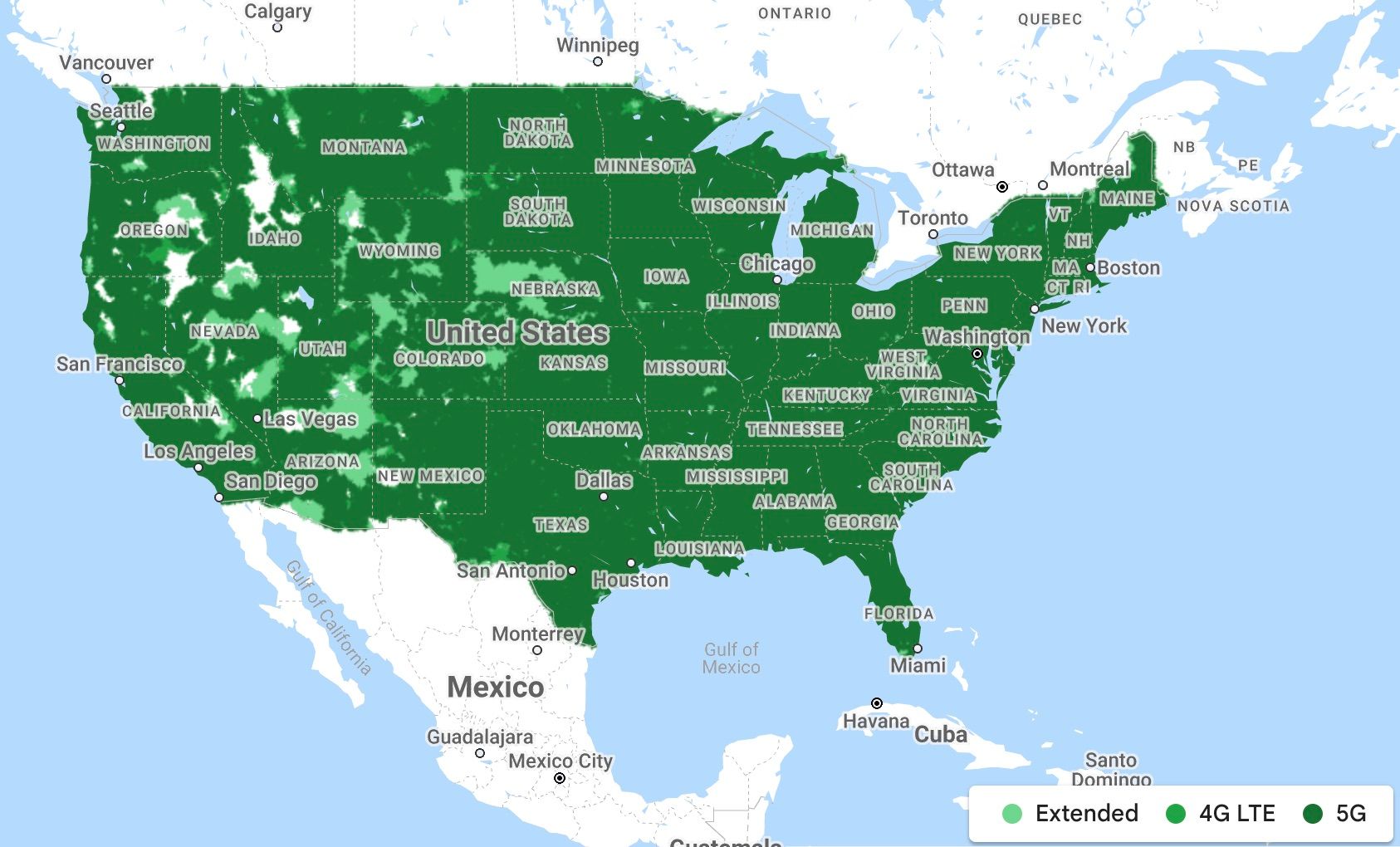 Google Fi exclusive subscriber features
Google Fi exclusive subscriber features
Google Fi has some neat features that set it apart from other carriers. The carrier emphasizes privacy and security, adding Google One VPN to its plans. There's also automatic end-to-end call encryption for Android devices when chatting with other Google Fi customers. Fi has a built-in spam call filtering feature, automatically stopping incoming calls identified as spam. Spam filtering, combined with Google's Pixel Call Assist suite, means you can avoid unwanted calls and text messages.
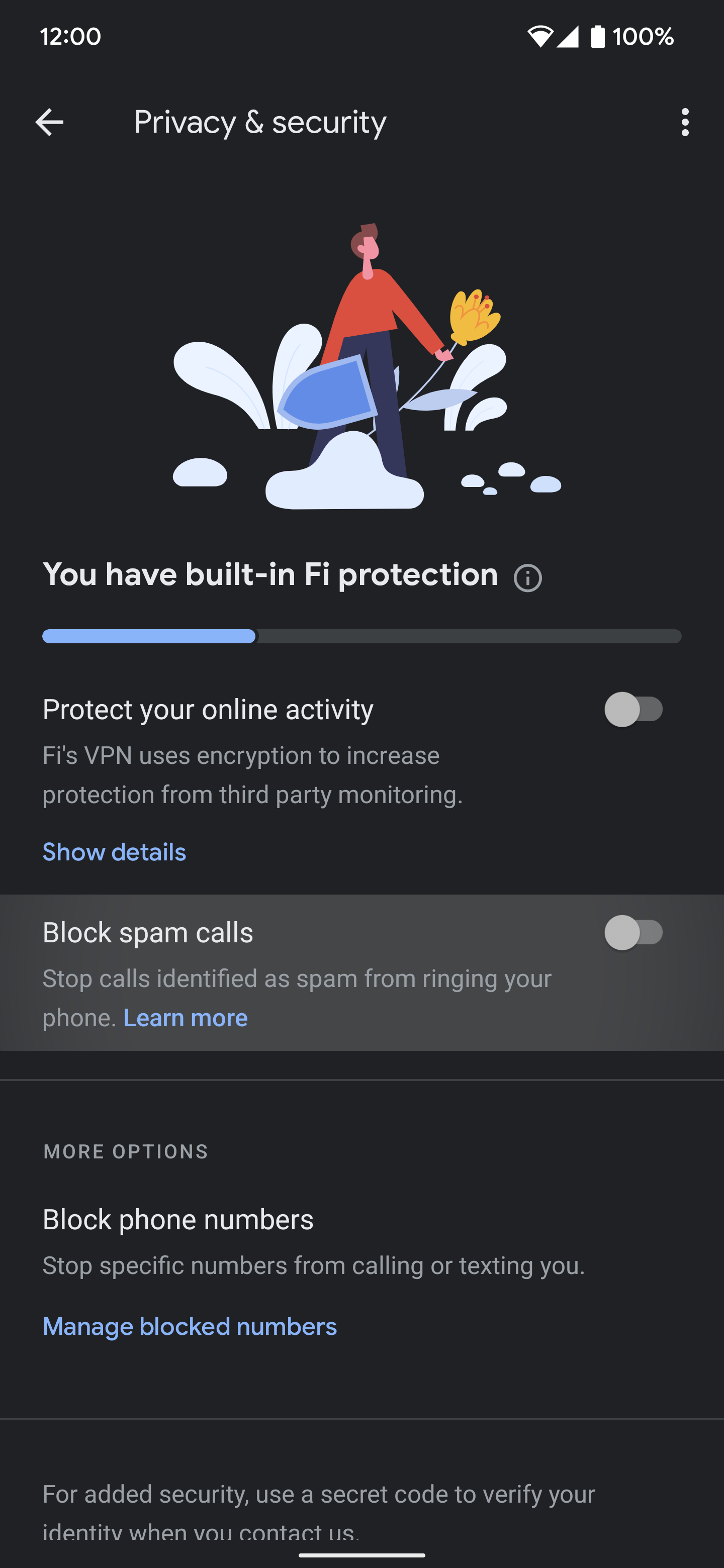
Google Fi has additional features that make managing multi-line accounts easier. In the Google Fi app, you can view a snapshot of the people on your plan, find out how much data each person uses, and create data alerts. If you have children on your account, you can block calls and texts from strangers, create a data usage budget, and set digital activity rules. Ground rules include content filters, screen time limits, app download approval, and device location tracking.
You can also make calls, send texts, and check your voicemails from your computer, even if your phone is turned off, though you can't use Google Messages' RCS features when your phone is turned off. You even get full data with supported smartwatches, like connectivity for the Pixel Watch that's free with the Simply Unlimited Plan.
What phones does Google Fi offer?
Google Fi offers a large selection of smartphones from Google, Motorola, and Samsung on its site. You can bring your device if it's supported on Fi's network (T-Mobile).
The phones Google sells on the Fi site have the Designed for Fi designation, meaning the handsets use eSIMs and are optimized to take advantage of the network's unique architecture. They use auxiliary networks like US Cellular to get data when outside T-Mobile's network. Many of the best Android phones have this distinction and get the best out of Google Fi.
Exploring other options
While Google Fi should appeal to many MVNO fans out there thanks to its unique benefits like a Google One VPN and extra cloud storage space, these are still niche perks, which means there are plenty of competing MVNOs to consider for your specific needs. So, if you've ever wondered how Fi stacks up against Ryan Reynold's Mint Mobile or Verizon's prepaid service Visible, AP has you covered.
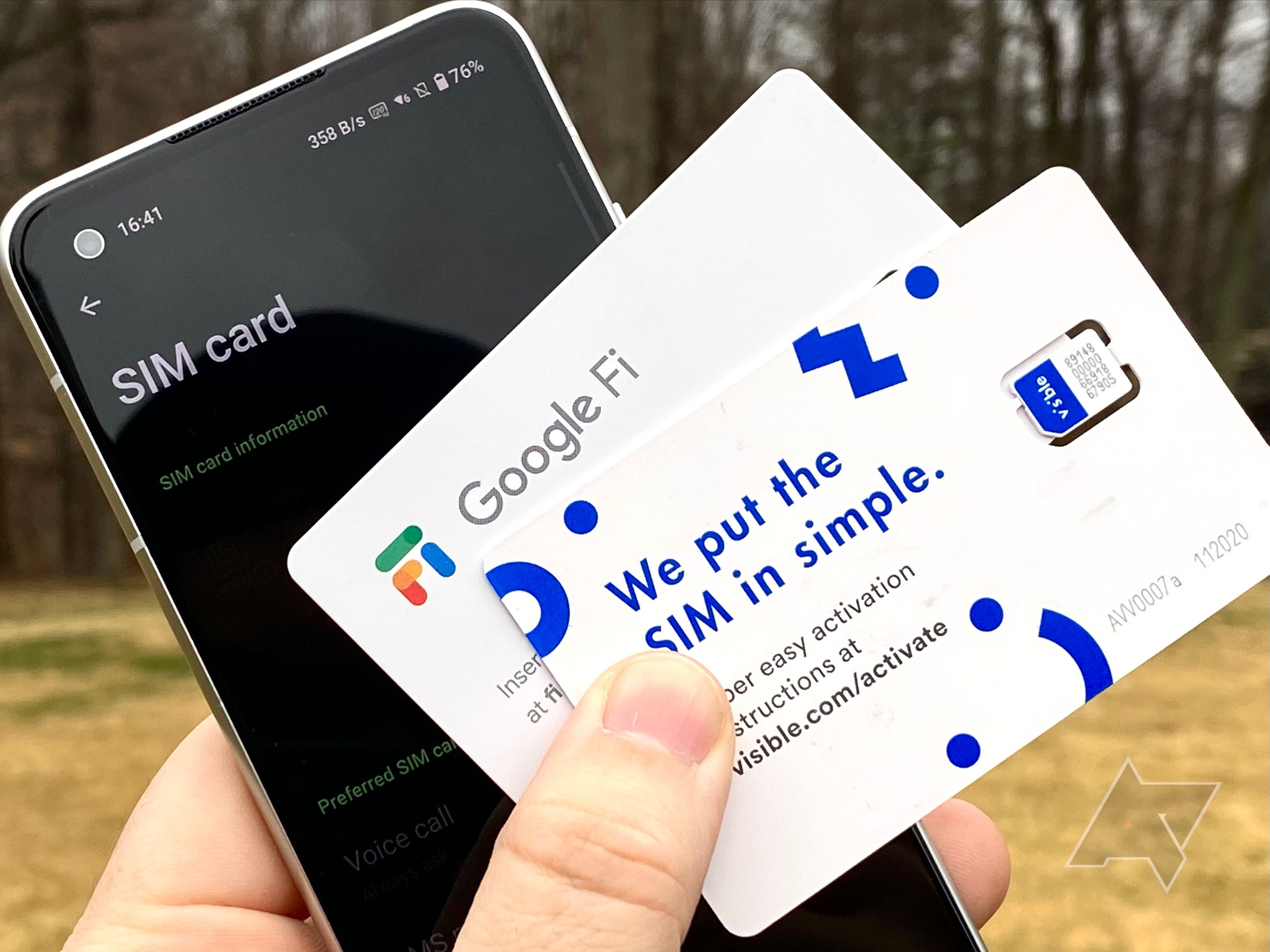
Visible vs. Google Fi: Which carrier should you pick?
Google Fi has great features, but Visible's simplicity and low prices push it ahead.

